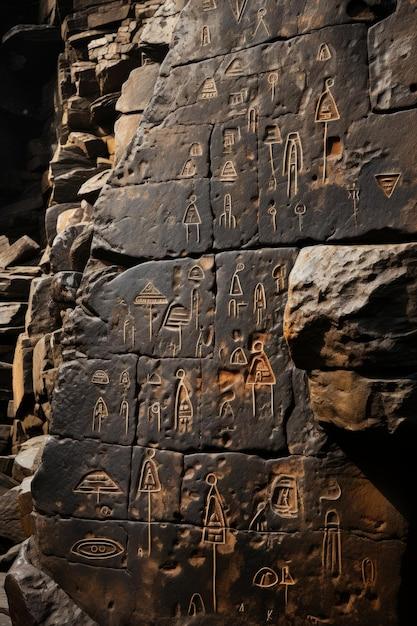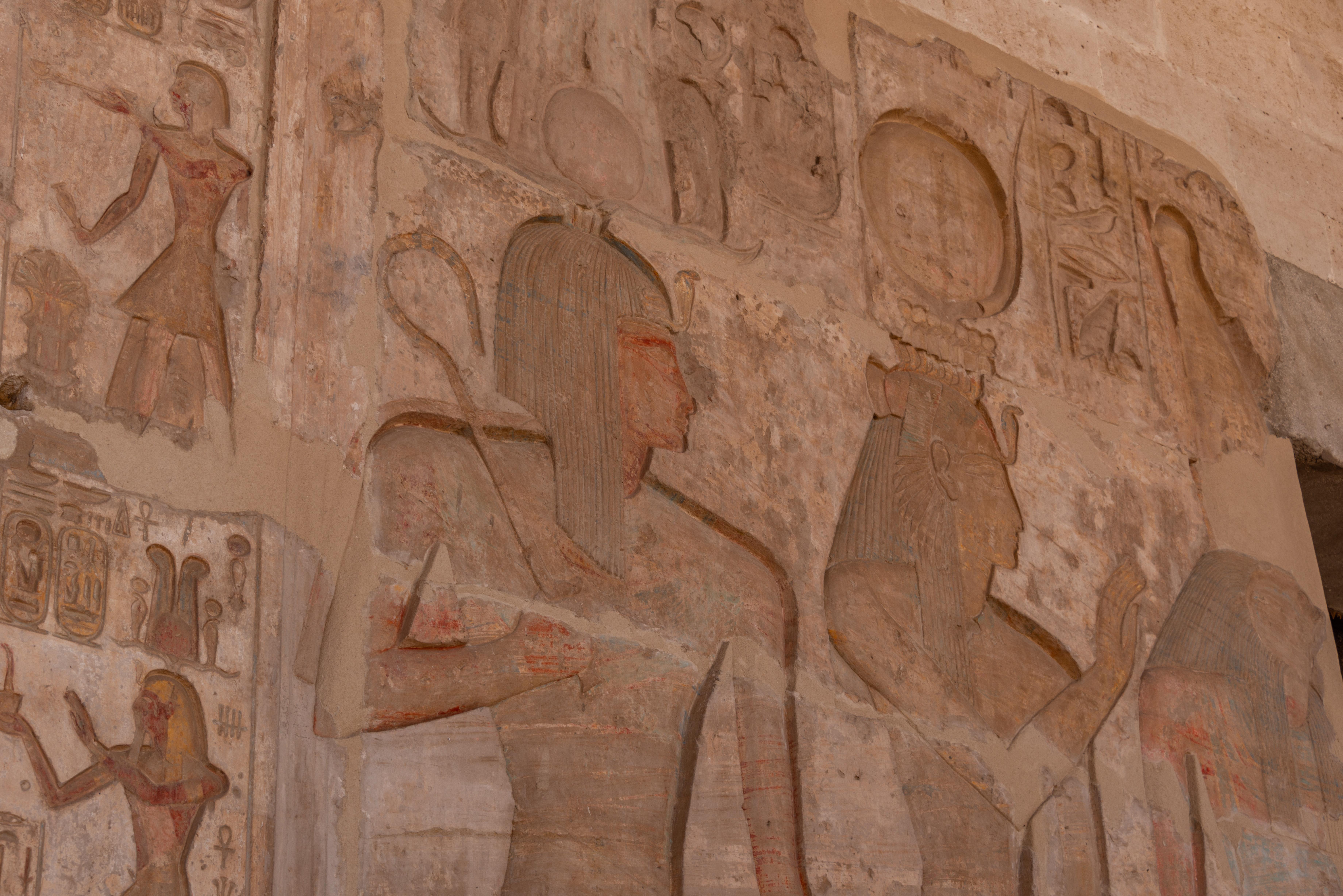Did you know that ancient Egypt, known as the “Black Land,” owes much of its prosperity and survival to the fertile Nile River? In this blog post, we will explore how the unique geographical features of Egypt’s Black Land played a crucial role in shaping the civilization and culture of the ancient Egyptians.
From stunning pyramids and mummification practices to the well-known depictions of pharaohs, Egypt has always fascinated historians and archaeologists. We will delve into intriguing questions like whether pharaohs buried their servants with them and what significance mummification held in Egyptian beliefs. Additionally, we will uncover the common elements found in most pictures of pharaohs and discover the fascinating period of expansion during the New Kingdom.
Prepare to embark on a journey through time as we uncover the mysteries and wonders of ancient Egypt, and unravel the remarkable impact of the Black Land on their civilization.
Wondering about the intriguing secrets of ancient Egypt? Join us as we delve into the impact of the Black Land on this captivating civilization.

How the “Black Land” Shaped Ancient Egyptian Civilization
The geographic feature known as the “Black Land” played a crucial role in shaping the ancient Egyptian civilization. This expansive stretch of fertile soil, encompassing the Nile River Valley and Delta, provided the essential foundation upon which one of the world’s greatest civilizations was built.
The Fertility Oasis
The Black Land, appropriately named for its dark, rich soil, was a veritable oasis amidst the surrounding arid desert. Its fertility was a result of the Nile River’s annual flooding, which deposited nutrient-rich silt onto the land, creating a perfect environment for agriculture.
For the ancient Egyptians, this meant an abundant supply of food that, in turn, supported a flourishing society. With the ability to grow crops such as wheat, barley, and flax, the Black Land provided sustenance for both the common people and the ruling elite.
A Source of Life
The Nile River, flowing through the heart of the Black Land, was not only the lifeblood of ancient Egypt but also its cultural and economic focal point. The river’s predictable flooding not only replenished the soil but also provided a means of transportation, trade, and communication.
The Egyptians recognized the importance of the Nile’s regular inundation, attributing it to the god Hapy, who they believed controlled the river’s flow. This reverence for the Nile was not unwarranted, as without its life-sustaining waters, the Black Land would not have been the thriving civilization we marvel at today.
A Natural Barrier
The Black Land’s proximity to the surrounding desert also played a significant role in the development of ancient Egyptian civilization. The vast and seemingly impassable deserts acted as natural barriers, protecting the civilization from invasion and fostering a sense of security.
With limited access points, the desert deterred potential aggressors, enabling the Egyptians to focus on their own development and prosperity. This stability allowed for the growth of complex societal structures, intricate religious beliefs, and advancements in art, architecture, and science.
The Power of Contrast
Beyond its practical significance, the stark contrast between the Black Land and the surrounding deserts had a profound impact on ancient Egyptian culture and identity. The Egyptians saw themselves as unique, standing apart from the harsh and unforgiving desert landscapes.
This perception of contrast influenced their religious beliefs, with deities often associated with either the life-giving Nile and fertile Black Land or the treacherous deserts. It also found expression in their art, where the vibrant green of the Black Land was juxtaposed with the golden yellows and browns of the desert.
The Black Land’s Lasting Legacy
While ancient Egyptian civilization is but a distant memory, the impact of the Black Land continues to reverberate through the annals of history. The fertile soil and life-giving waters of the Nile fueled an extraordinary civilization that has captured the imaginations of people around the world for millennia.
So, the next time you marvel at the pyramids, ponder the hieroglyphics, or study the intricate burial practices of the ancient Egyptians, remember that it was the Black Land, that vibrant strip of fertility amidst the desert, that laid the foundation for one of the most remarkable civilizations to have ever graced this planet.
Keep reading to learn more about the remarkable aspects of ancient Egyptian civilization and how they continue to fascinate us to this day.

FAQ: How Did the Black Land Impact Ancient Egyptian Civilization?
Did Pharaohs Bury Their Servants With Them
In ancient Egypt, pharaohs believed in taking their riches and belongings to the afterlife. However, contrary to popular belief, they did not bury their servants alive alongside them. Instead, the pharaohs were accompanied by symbolic representations of their servants, called shabtis. These small figurines were crafted to serve the pharaoh in the afterlife, performing any chores or tasks that may arise. So, fear not, the servants were spared from such a fate!
How Did Mummification Reflect Egyptian Beliefs
Mummification played a significant role in ancient Egyptian culture. Egyptians believed that preserving the body was necessary for the soul to live on in the afterlife. The process involved removing the organs and treating the body with natural preservatives. The heart, believed to be the center of intelligence and emotion, was left intact. The brain, however, was discarded as it was deemed unimportant. The body was carefully wrapped in linen and placed in a decorated coffin, complete with amulets for protection. This elaborate process demonstrated the Egyptians’ deep faith in the afterlife and their commitment to preserving the physical vessel for the soul.
Do Monks Starve Themselves
While some religious practices may involve fasting or periods of restraint, it is important to debunk the myth that monks starve themselves. Monks, regardless of their religious tradition, prioritize spiritual discipline and self-control, but they also understand the importance of nourishing their bodies. Eating nutritious food is seen as essential for physical health, as it supports their mental and spiritual well-being. So, fear not, monks are not going hungry in the pursuit of enlightenment!
What Do Most Pictures of Pharaohs Have in Common
If you’ve ever wondered about the commonalities in the depictions of pharaohs, you’re not alone! Most pictures of pharaohs share some striking similarities. Firstly, pharaohs are often portrayed as larger than life, emphasizing their divine status and authority. They are typically depicted with a crook and flail, symbols of their power and dominion. Additionally, the headdress worn by pharaohs, the iconic Nemes, is a symbol of their kingship. It features horizontal stripes and a cobra known as the uraeus, representing royalty and protection. So, next time you come across an ancient Egyptian artwork, keep an eye out for these fascinating details!
How Did the Black Land Impact Ancient Egyptian Civilization
The Black Land, also known as Kemet, was a term used to describe the fertile land along the Nile River. This lush strip of land greatly impacted ancient Egyptian civilization in multiple ways. The annual flooding of the Nile brought nutrient-rich silt, replenishing the soil and allowing for bountiful agriculture. The Egyptians mastered the art of irrigation to control the water flow, ensuring their crops thrived. The abundance of food resulting from successful farming sustained the population and allowed for the development of a complex society, with advancements in art, architecture, and technology.
What Was One Result of the Period of Expansion during the New Kingdom
The New Kingdom marked a period of expansion and prosperity in ancient Egypt. One significant result of this expansion was the acquisition of vast territories and wealth. The Egyptian empire extended its reach to regions such as Nubia and the Levant, enabling the kingdom to control important trade routes and access valuable resources. This expansion also brought cultural influences from these conquered lands, enriching the Egyptian civilization with new ideas, art styles, and technologies. The New Kingdom’s era of expansion cemented Egypt as a major power in the ancient world, leaving a lasting legacy that still captivates us today.
Now that you have some intriguing answers to commonly asked questions about ancient Egypt’s Black Land, delve deeper into the wonders of this fascinating civilization!
